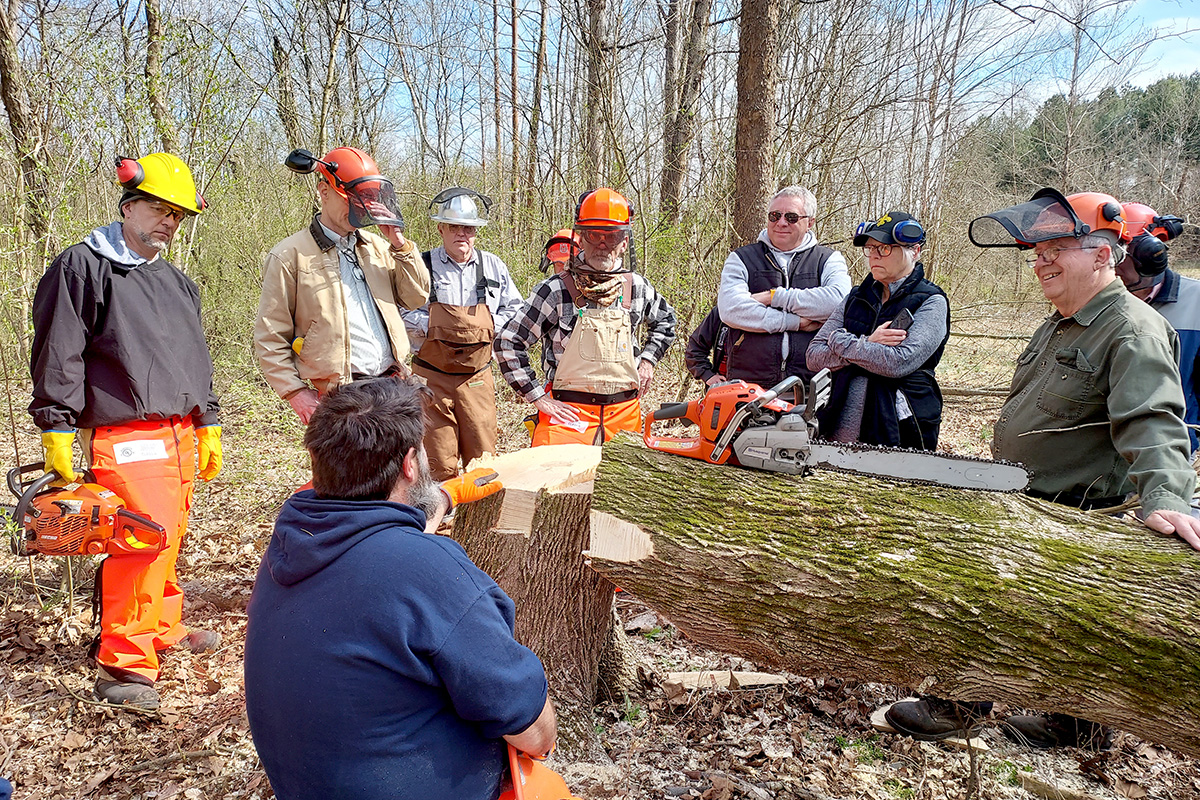
Participants gather for the first field day of a Beginning Forest Landowner Program offered by the U. of I. Extension. Forestry and research specialist Christopher Evans, foreground, leads the class.
Photo by Taryn Bieri, University of Illinois
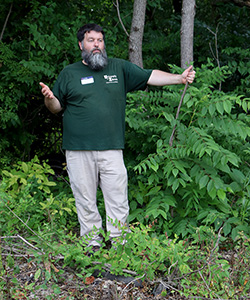
Evans shows participants how to identify and remove invasive species.
Photo by Heather Willis, University of Illinois
SOUTHERN ILLINOIS - No matter how many times I do this, I always get nervous. I am demonstrating the proper use of a chainsaw to fell a tree and I want it to go well. After choosing the right tree, a medium-sized box elder, I walk through the steps out loud so that everyone in the class can hear me: One must assess any hazards, determine which way the tree is leaning and whether it might be rotten in the middle, find a safe escape route for when the tree starts falling. I develop a plan of how I am going to cut this tree and where it is going to go and decide if I am comfortable with the plan.
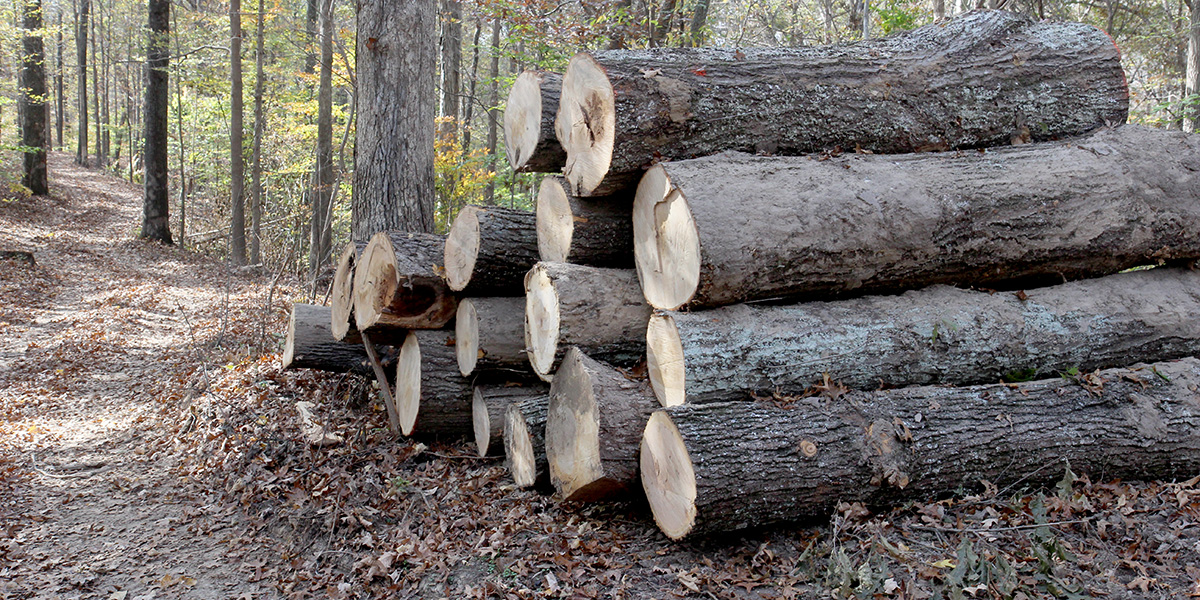
Landowners learn how to sustainably harvest timber from their forests.
Photo by Chris Evans, University of Illinois
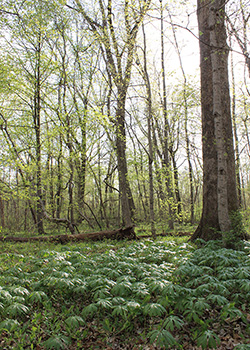
An Eastern bottomland hardwood forest in Jackson County, Illinois.
Photo by Chris Evans, University of Illinois
I move everyone back to a safe distance, put on my safety gear and get to work cutting the tree. Everything goes smoothly and the tree falls safely to the ground with a series of loud cracks as the smaller branches break under its weight.
Felling this tree is the last event in our first field day of the newly developed Beginning Forest Landowner Program in southern Illinois.
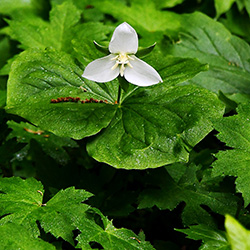
The woodland perennial, white trillium, is native to Illinois.
Photo by Chris Evans, University of Illinois
I developed this course with colleagues in the University of Illinois Extension Forestry Program and other southern Illinois conservation groups. It's a new approach to forestry education. It takes the students on a deeper dive into forest management through a year-long curriculum that, in addition to the more traditional classroom instruction, incorporates hands-on field trainings, mentoring, networking events and peer-to-peer learning. The long-term goal of the program is to give landowners the experience, skills and connections needed to better manage their forests.

Landowners gather for a lesson on prescribed forest fires.
Photo by Taryn Bieri, University of Illinois
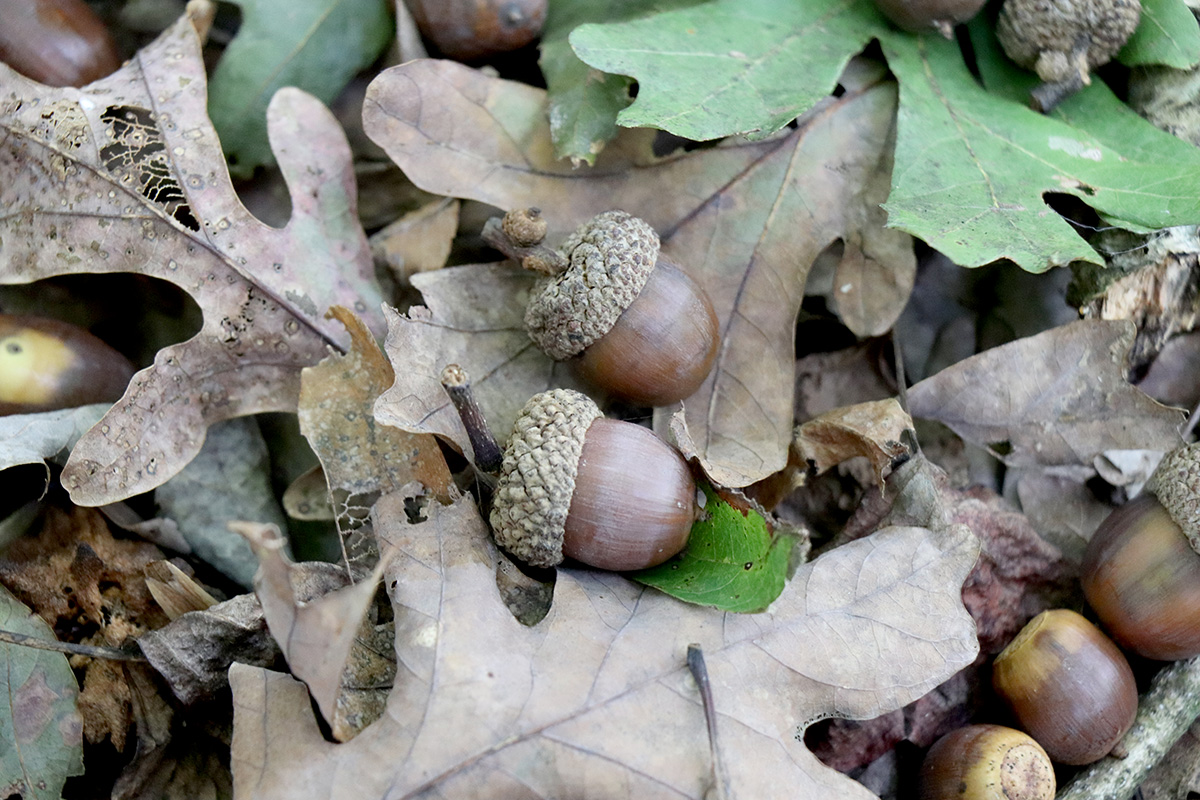
White oak acorns on the forest floor.
Photo by Chris Evans, University of Illinois
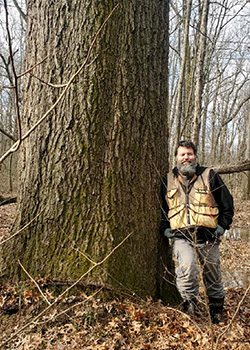
Evans stands next to a state champion pin oak tree in Union County, Illinois.
Photo by John Hartleb, U.S. Fish & Wildlife Service
Some landowners are new to forestry; others have a little more experience but know they need to learn more to be effective. Today is the first time some of the landowners have even seen a chainsaw in action up close. Everyone crowds around the stump, and we talk about forest management. More important than the "how to" manage a forest is the "why to" manage a forest. It is these discussions in the less-scripted moments of the class that I hope are most impactful to the new landowners.
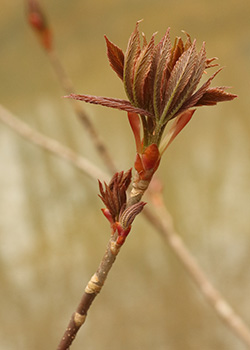
Spring leaves emerge on an Ohio buckeye tree.
Photo by Chris Evans, University of Illinois
The forests of Illinois are incredibly important to the state. Not only can they provide landowners with economic income through timber sales and other ventures, forests provide recreational opportunities and vital ecosystem services such as flood abatement and erosion control. Active forest management helps landowners better meet their goals for their forests and allows the forest to remain healthy and sustainable.
Assisting and educating landowners is at the core of what I do. Illinois has about 82,000 family-owned forests covering over 3.8 million acres of the state. My course is just one of many programs Extension Forestry offers these landowners.
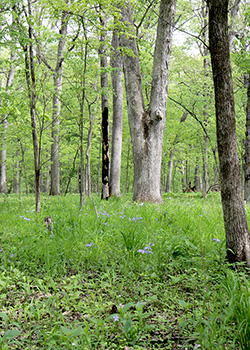
Illinois forests and woodlands are rich in plant and wildlife species.
Photo by Chris Evans, University of Illinois
In the coming year, the course will cover tree identification, wildlife, invasive species control, prescribed fire, timber harvest, forest planning, pruning, cost share programs and much more.
As we pack up and finish the field day, a participant walks up to ask a few more questions about forestry. Helping landowners and providing sound advice is the part of the job that gives me the most satisfaction. Fortunately, this is what being an Extension professional is all about.






